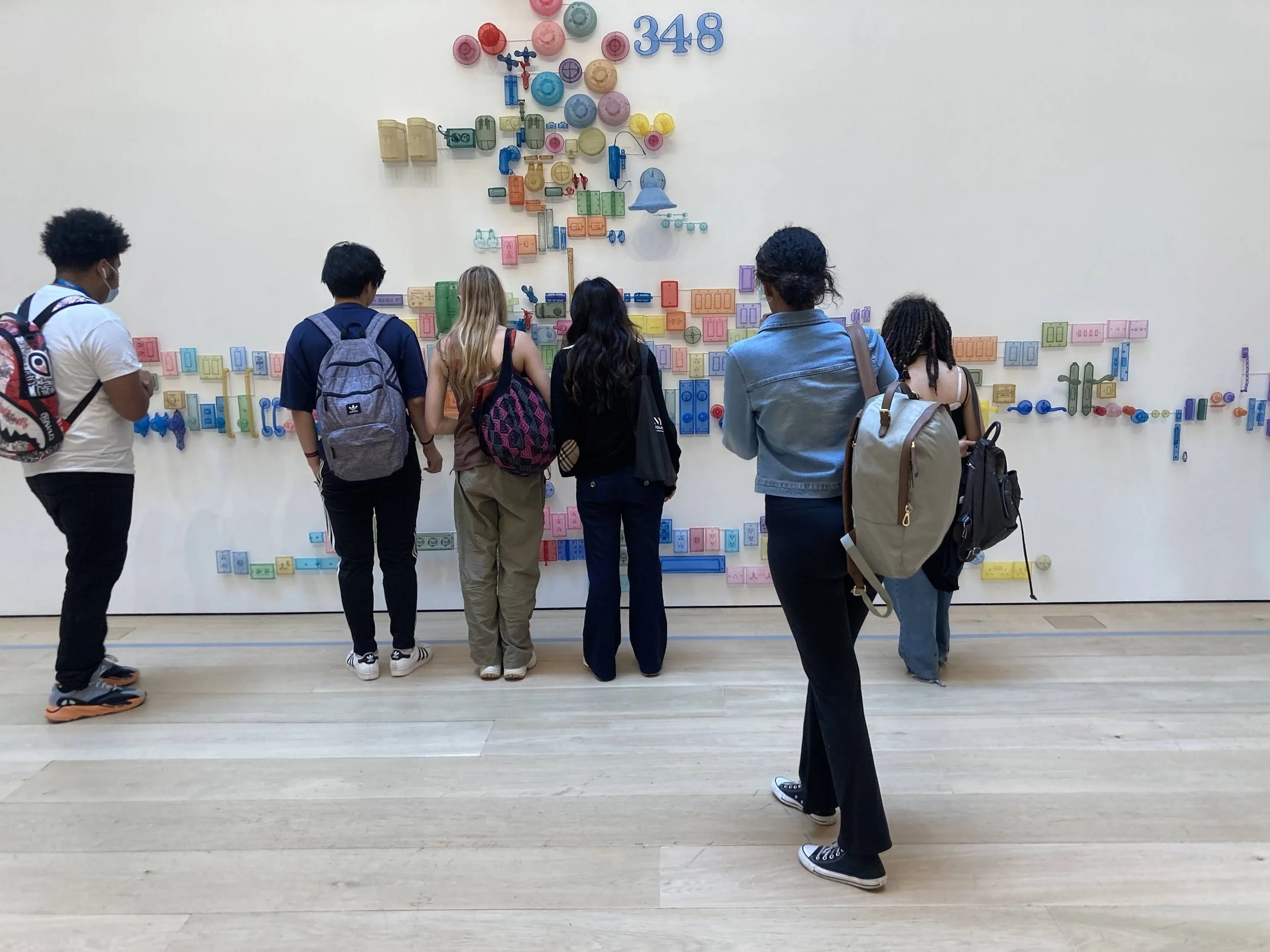Math in Consortium Schools
The mathematics performance-based assessment task (PBAT) in Consortium schools is a non-routine, complex problematic scenario that allows for multiple avenues of problem solving.
The PBAT may or may not be an open-ended task with multiple “correct” solutions or one solution but nevertheless the task must be appropriately challenging for the individual student, mathematically rich, and be able to be approached in multiple ways.
The PBAT assignment may be given to students by the teacher, but can also be co-generated with students. All tasks should be geared towards promoting student autonomy and independent mathematical thinking.
The Math PBAT Process
The Mathematics PBAT requires students to write a sophisticated mathematical document that describes in detail the journey the student experienced, including their process and the solution to the non-routine problem. Students use math journals throughout the problem-solving process to support the development of this paper. Students then defend their work in front of a mathematically knowledgeable panel. During this oral defense, students are expected to take part in a mathematical conversation which includes an on-demand problem that arises from the PBAT itself and expands on their understanding.
The Math PBAT task is aligned to the five dimensions in the Consortium Math Rubric. These five dimensions reflect aspects of the thinking process students go through when they solve a problem. These five dimensions have a long history dating back to their presentation by NCTM in 1989.
Learn more about the Quality & Criteria of a Math PBAT, and review the sections for a deeper dive into the Consortium’s methods of math education, including examples of student work & access curricular resources.
Non-Routine Problem-Solving Defined
The New York Performance Standards Consortium places non-routine problems at the center of our work in mathematics.
What are non-routine problems and why do we want students to work with them?
A non-routine problem is defined as "a cognitively non-trivial task; that is, the solver does not already know a method of solution" (Selden, A., Selden, J., Hauk, S., & Mason, A., 2000, p. 129*). Non-routine problems require solvers to use learned concepts, facts and procedures in unfamiliar ways. Typically there are no set formulas or strategies that one can use to solve a non-routine problem. It takes creativity and originality to solve them. They can be done by creating our own ways to solve the problem and sometimes creating our own formulas. (Mathelogical)
Here is a classic example. We call it The Last Person Standing. It was originally known as the Josephus Problem.
One thousand people stood in a very large circle. Each, starting with the Jennifer Lopez look-alike, wore a sign on their back with a numeral from 1 to 1000 in a clockwise sequence. They began counting off. The Jennifer Lopez look-alike said, “One in,” and remained in the circle. The 7”6’ basketball player to her left said, “Two out,” and left the circle. The rap singer next in sequence said, “Three in,” and remained in the circle. The United States Senator who was next in sequence said, “Four out,” and left the circle. So it continued with each person sporting an odd numeral stating the numeral, saying “in,” and remaining in the circle and with every person wearing an even numeral leaving the circle.
It was easy to visualize who remained in the circle when the count off again reached the Jennifer Lopez look-alike. Since the person before her said, “One thousand out,” and left the circle, she now said, “One in,” and stayed in the circle. Continuing this sequence the rap singer said, “Three out,” and left the circle. This process would keep going on and on until only one person was left in the circle. What is the number of the last person standing?
Why is this a non-routine problem?
This problem is non-routine because it does not have an immediately apparent strategy for solving it. Someone attempting to solve it will need to “play” with the problem as a means of discovering a strategy that might lead one in the right path. It requires original thoughts to solve it. Someone working on the problem needs to be creative, perhaps using similar mathematical thinking one might have experienced before.
A problem solver might ask themsel, “Can I simplify this problem? Will it help me make sense of what is going on here?” This problem allows for multiple avenues for solving it where the unique way a person thinks will be expressed by the approach and strategy used.
Resources for Math Teaching and Learning in Consortium Schools
Consortium-Created Resources:
Mathematics Instruction & Interim Assessments in Consortium Schools
This comprehensive document offers guidance for teachers interested in the Consortium math instruction and PBAT model. This guide was developed by Jonathan Katz, Terry Weber, and Joe Walter, Consortium Math Specialists.Consortium Problem Solving Curriculum & Student Booklet
This is curriculum written for Consortium mathematics teachers that helps answer the questions: How do we help students to develop as mathematical thinkers through a problem solving approach to teaching and learning? How do students to develop mathematical thinking through solving problem different problems? Created by Jonathan Katz, Consortium Math Specialist.
Quality & Criteria of a Math PBAT
The PBAT experience in mathematics should be an experience a student never forgets because they had the opportunity to use their mind in deep and new ways that can make for true pride. Our goal is to have this document become central in all schools as they plan their PBAT work.Math PBAT Task
Examples of assessment tasks to use with students organized by skill level.Consortium Math Diagnostic
11 possible questions or problems that offer an opportunity to learn about how our students think, strategize, reason and communicate their mathematical ideas.
Curriculum & Professional Development Resources Developed by Consortium Teachers:
Gerrymandering
This unit is focused on issues of electoral fairness and gerrymandering. Students apply mathematical concepts to understand how the most commonly used gerrymandering techniques impact representation. Through the unit, students engage with and understand one of the most insidious threats to equitable government policy. Created by Kate Belin, Fannie Lou Hamer Freedom High School & Tufts University.Proofs & Games
Students use their observations and pattern findings to discover and/or understand the underlying structure of mathematical concepts; to determine functions, conjectures or hypotheses and definitively prove these ideas right or wrong. Proofs apply to all fields of mathematics in several fields, including number theory, algebra, geometry, and game theory. Created by Gabriella Weisberg, Humanities Prep, and Andrea Kung, Urban Academy.Summer 2020 Geometry Problems & Resources
Created by Patty Fox, Institute for Collaborative Education & Joe Walter, CPESS-retiredSummer 2020 Problem Solving Workshop Materials
Created by Gabriella Weisberg, Humanities Prep, Wan Park, Community School for Social Justice, and Josue Cordones, Bronx Collaborative High School.




